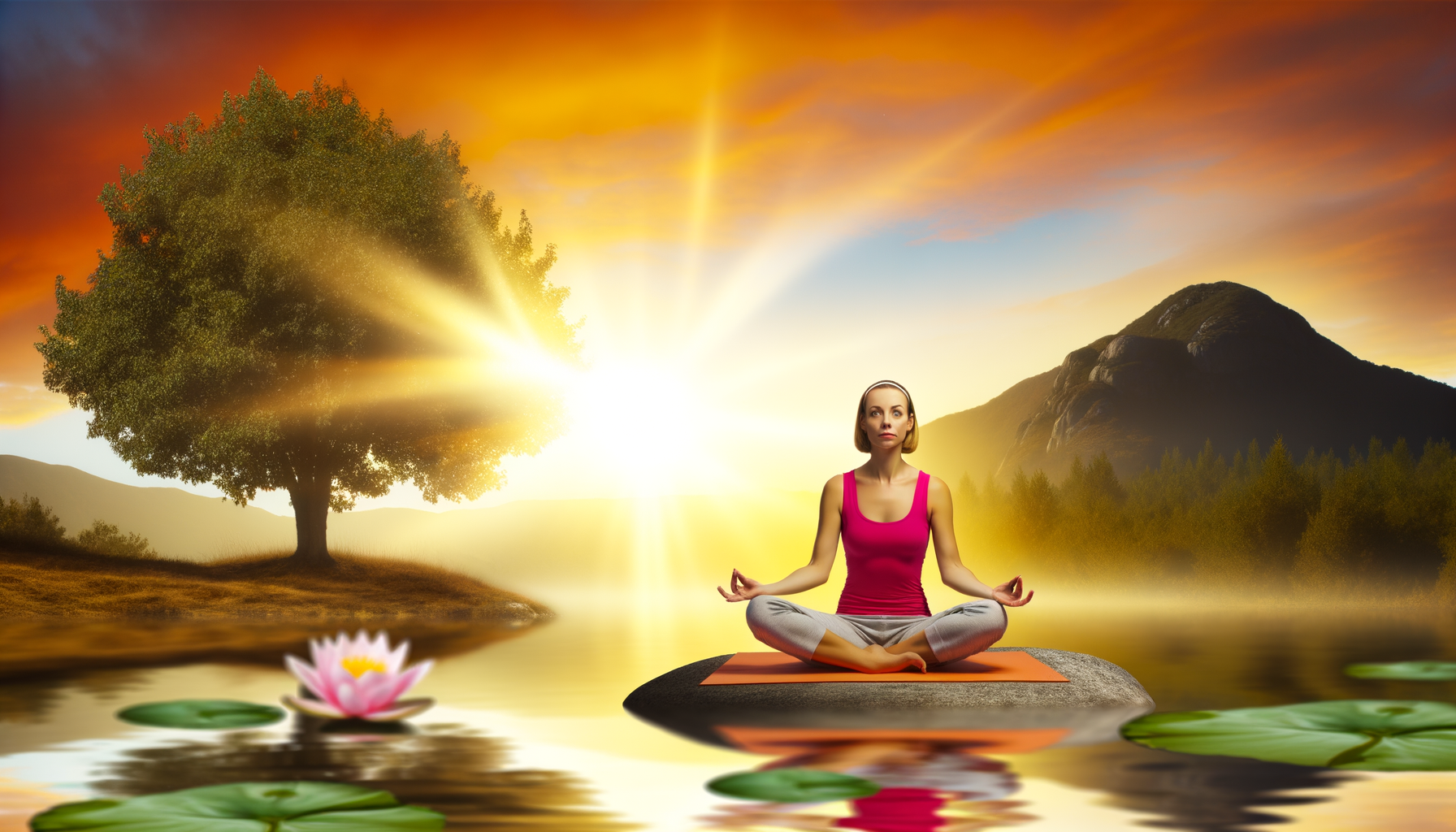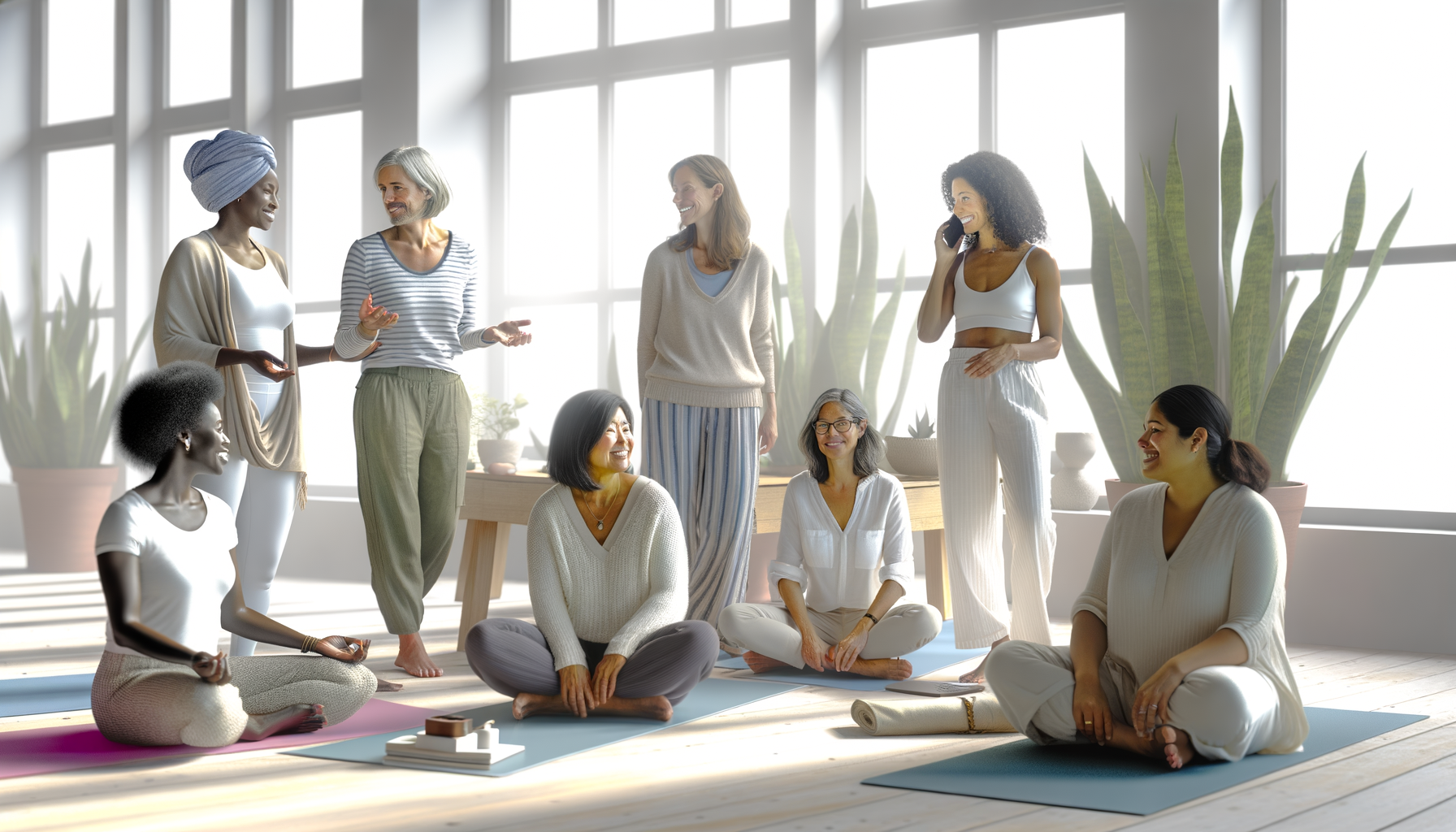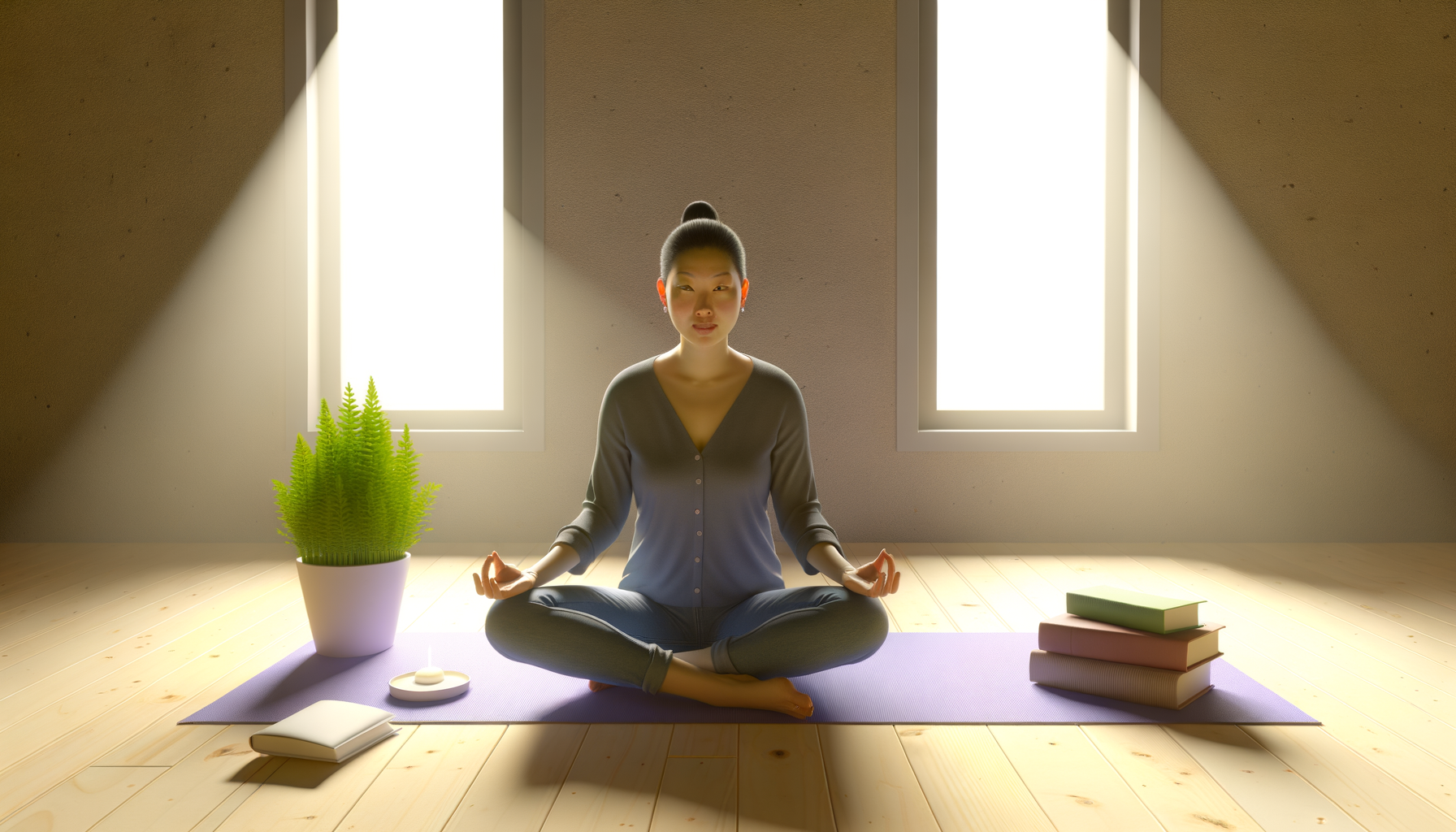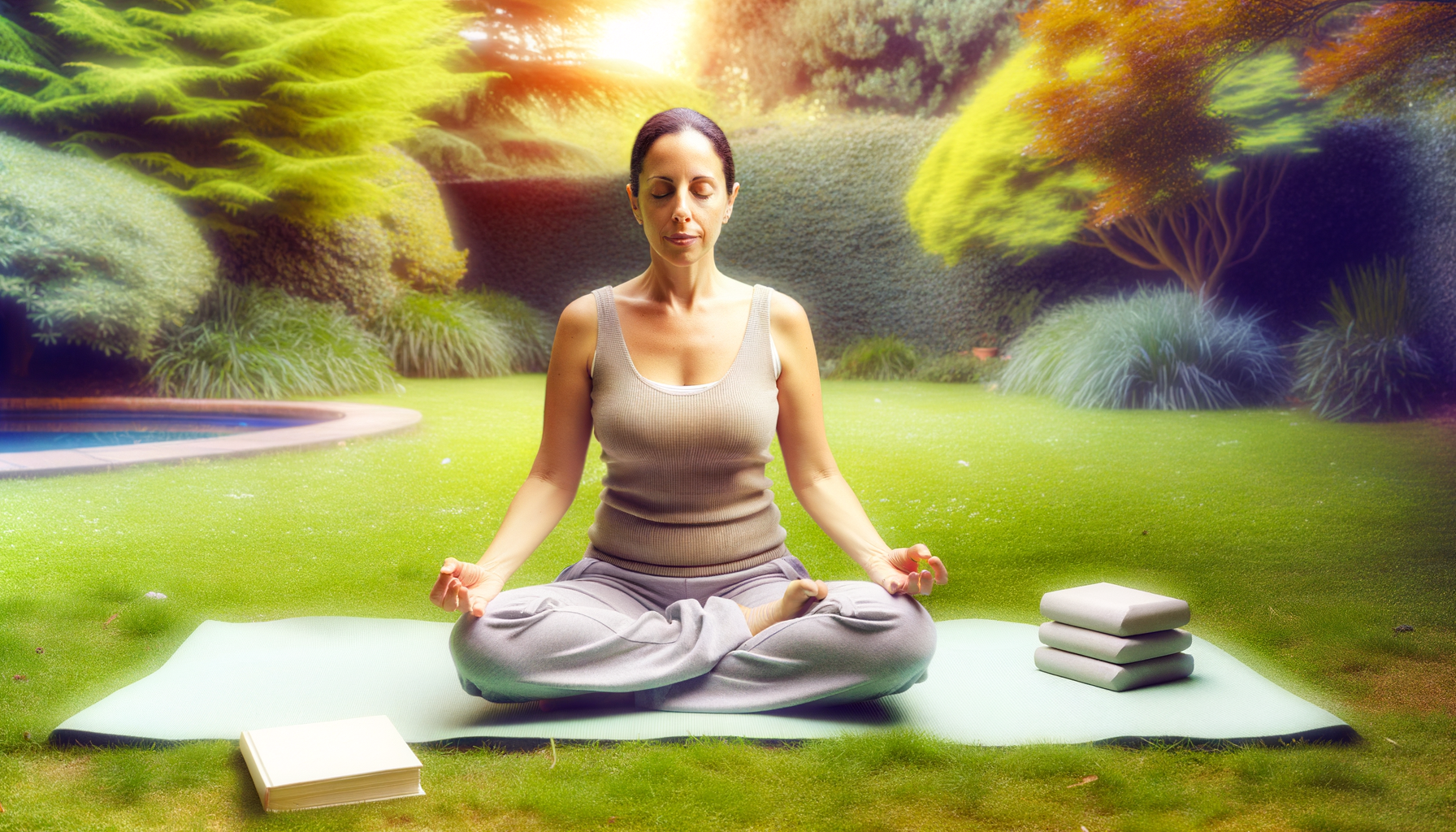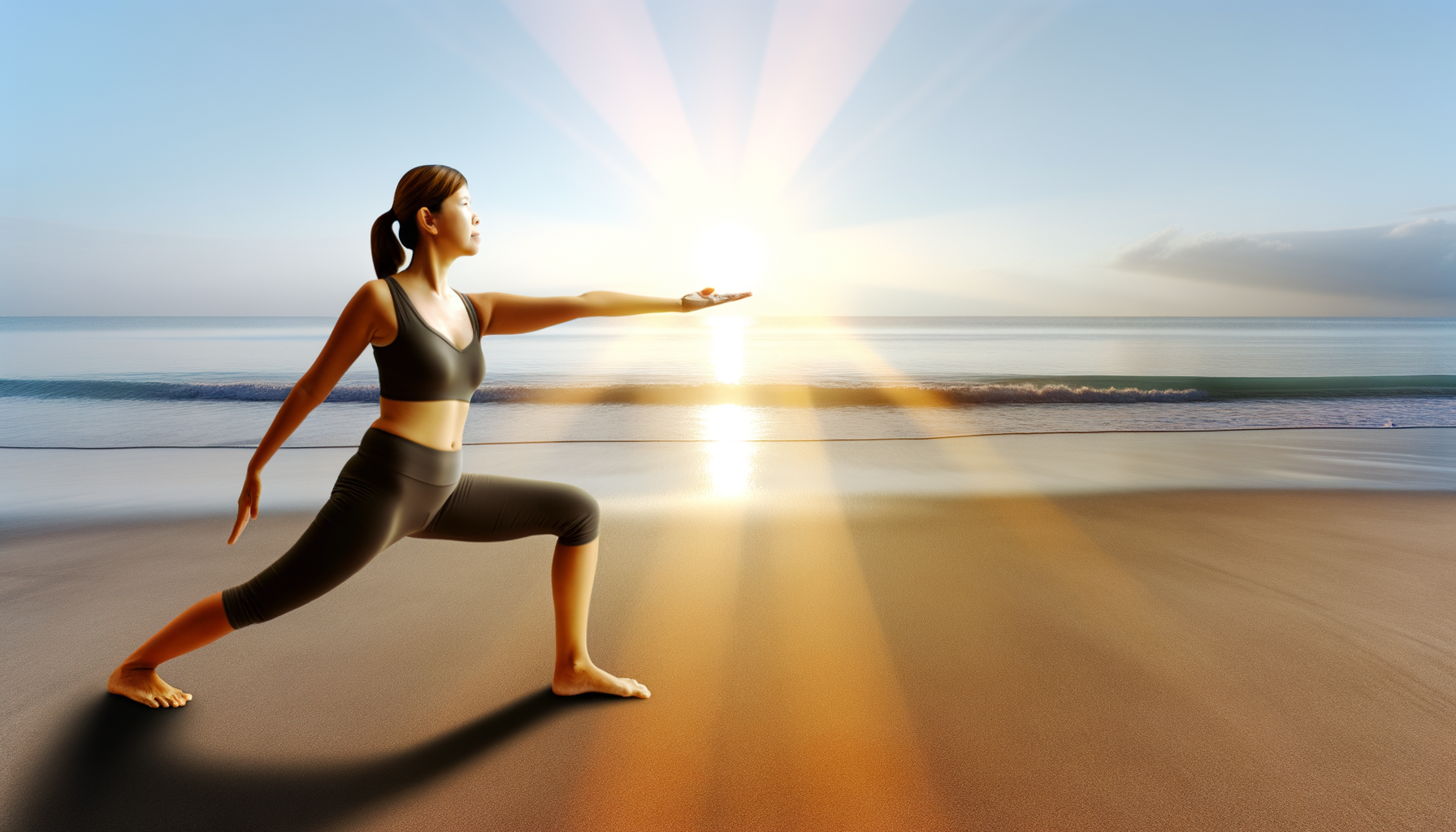
Introduction to Yoga and Lifelong Health
Understanding Yoga Beyond Physical Postures
Yoga is often synonymous with physical flexibility and postures, known as asanas, but its essence extends far beyond these visible aspects. Originating over 5,000 years ago, yoga encompasses a comprehensive system for wellbeing, integrating mental, spiritual, and physical disciplines. The practice of yoga is about creating balance within the body through developing both strength and flexibility. This is achieved not just through the asanas, but also through breath control, or pranayama, and meditation, which together enhance the flow of energy throughout the body.
The Connection Between Yoga and Holistic Health
Yoga’s approach to health is inherently holistic. It recognizes the individual as a complex interplay of body, mind, and spirit, and seeks to bring harmony to all these aspects. By combining physical postures with controlled breathing and mental focus, yoga creates a state of self-awareness and inner calm. This holistic approach can lead to profound changes in one’s life, influencing everything from physical health to emotional resilience and mental clarity.
Benefits of Yoga Across Different Life Stages
The versatility of yoga makes it beneficial for all ages, adapting to the changing needs of the body through various life stages. In youth, it lays the foundation for a healthy lifestyle, promoting stamina and flexibility. As adults, yoga can be a tool for stress management, balancing the demands of career and family life. For seniors, it offers gentle ways to maintain mobility and cognitive function. At every stage, yoga supports holistic health, providing tools for physical health, mental balance, and emotional wellbeing.
Setting Intentions for a Personal Yoga Journey
Embarking on a yoga journey is a personal endeavor that begins with setting intentions. This involves reflecting on your goals, whether they are to improve physical fitness, reduce stress, or seek spiritual growth. A personal yoga practice is not a one-size-fits-all routine; it should evolve with you, accommodating your body’s daily fluctuations and life’s changing circumstances. By setting clear intentions, you can tailor your practice to your needs, ensuring that yoga remains a supportive and enriching part of your life.
As we delve into the world of yoga for lifelong health, remember that the practice is not just about achieving the perfect pose but about fostering a deeper understanding of our bodies and minds. It’s a journey of continuous learning and personal growth, one that can enrich our lives in countless ways.
Yoga in Your 20s: Building a Strong Foundation
Energizing Sequences for Stamina and Flexibility
In your 20s, your body is at its peak of energy and resilience, making it the perfect time to establish a yoga practice that builds stamina and flexibility. Energizing sequences like Sun Salutations (Surya Namaskar) can kickstart your metabolism and enhance your vitality. Incorporating poses such as Warrior I and II (Virabhadrasana I and II) and Triangle Pose (Trikonasana) not only builds strength but also improves flexibility in the hips and shoulders, areas that often stiffen from sedentary lifestyles.
Stress-Relief Through Yoga for Students and Young Professionals
With the pressures of studies, starting careers, and navigating personal relationships, your 20s can be a stressful time. Yoga offers a sanctuary for stress relief. Forward bends and restorative poses like Child’s Pose (Balasana) and Corpse Pose (Savasana) activate the parasympathetic nervous system, promoting relaxation and mental clarity. Breathwork, or pranayama, is also a powerful tool for calming the mind and reducing anxiety.
Incorporating Yoga into a Busy Lifestyle
Despite the benefits, finding time for yoga can be challenging with a busy schedule. To incorporate yoga into your life, consider shorter, more frequent practices. Even 15 minutes of yoga can have significant benefits. Utilize online classes or apps that offer guided practices you can do at home or during a break at work. Remember, consistency is key; regular practice, even if brief, is better than occasional longer sessions.
Mindfulness and Self-Discovery for Young Adults
Yoga is not just about physical postures; it’s also a journey of self-discovery. In your 20s, as you explore who you are and what you want from life, yoga can be a grounding force. Mindfulness meditation can help you cultivate a deeper awareness of your thoughts and emotions, leading to greater self-knowledge and life satisfaction. As you move through poses, pay attention to the sensations in your body and the flow of your breath, using this awareness to stay present and connected to your inner self.
Conclusion: Your 20s are a time of exploration and laying the groundwork for the future. A yoga practice tailored to your needs can provide a strong foundation for both physical and mental health that will support you for years to come. Embrace the energy of this decade to build a practice that is both energizing and restorative, and that can adapt to the ebbs and flows of your dynamic life.
Yoga in Your 30s and 40s: Balancing Strength and Stability
Yoga for Career Growth and Family Life
In the bustling years of your 30s and 40s, yoga can be a grounding force amidst the pressures of career advancement and family responsibilities. This period often demands a delicate balance between professional ambitions and personal life. Yoga sequences that focus on strength-building and stability, such as Warrior poses and balancing asanas, can enhance your physical resilience and mental focus, aiding in career growth. Simultaneously, incorporating partner or family yoga sessions can strengthen bonds and introduce a shared wellness activity into your household routine.
Managing Stress and Anxiety with Yoga
Stress and anxiety are common companions of the 30s and 40s age group, often related to life’s increasing responsibilities. Yoga offers a sanctuary for stress relief through practices like Pranayama (breath control) and meditation. Sequences that include forward bends and gentle twists can promote relaxation and release tension in the body. Regular practice can help in cultivating a sense of calm and equanimity, essential for managing life’s challenges.
Yoga for Pre and Postnatal Care
For those experiencing the journey of parenthood, yoga can be particularly beneficial. Prenatal yoga sequences are designed to support the body’s changes and promote the health and well-being of both mother and child. Postnatal yoga, on the other hand, focuses on restoring strength in the core and pelvic floor, as well as offering emotional support through community and shared experience. Always consult with a healthcare provider before beginning or continuing yoga during pregnancy and postpartum periods.
Maintaining Physical Health and Preventing Injuries
As the body matures, maintaining physical health and preventing injuries become paramount. Yoga practices in your 30s and 40s should include a mix of dynamic movements for cardiovascular health and static holds to improve muscle endurance. Emphasis on proper alignment and the use of props can help prevent common injuries. Incorporating restorative yoga and Yin yoga can aid in recovery and flexibility, ensuring a sustainable practice. Regular yoga can also be a preventative measure against conditions such as osteoporosis, which begins to be a concern in these decades.
By integrating yoga into your daily routine, you can create a holistic approach to health that supports your lifestyle changes, nurtures your personal growth, and provides a foundation for well-being that will carry you into the later stages of life.
Yoga in Your 50s: Graceful Aging and Vitality
Entering the fifth decade of life brings a wealth of experience and wisdom, but it also introduces new challenges and transitions. Yoga, with its holistic approach to well-being, offers a supportive path through these changes. Tailoring your yoga practice during this time can help manage menopause symptoms, maintain bone health, rejuvenate the spirit, and manage chronic conditions.
Adapting Yoga for Menopause and Midlife Transitions
Menopause is a significant transition for women in their 50s, often accompanied by physical and emotional changes. Yoga can be a sanctuary during this time, offering practices that cool the body, balance hormones, and provide emotional support. Poses like Forward Folds and Supported Bridge Pose can be particularly soothing, while Pranayama (breathing exercises) like Sitali help cool the body and calm the mind.
Yoga for Bone Health and Osteoporosis Prevention
As we age, maintaining bone density becomes crucial. Weight-bearing yoga poses such as Warrior series, Triangle Pose, and Tree Pose encourage bone strength. Gentle inversions and balance poses also contribute to bone health by stimulating bone growth and improving stability, which is essential to prevent falls.
Restorative Yoga for Rejuvenation
Restorative yoga is a gentle, therapeutic form of yoga that uses props to support the body, allowing for deep relaxation and rejuvenation. Poses like Supported Child’s Pose and Legs-Up-The-Wall can help release tension and promote a sense of well-being. This practice is particularly beneficial for those experiencing fatigue or stress, as it nurtures the nervous system and encourages mindfulness.
Yoga for Chronic Condition Management
Chronic conditions such as arthritis, hypertension, and back pain can be managed with a consistent yoga practice. Yoga offers gentle stretches and strengthening exercises that can reduce pain and improve mobility. For instance, Chair Yoga can be a great way to build strength without strain, and Water Yoga can provide the benefits of yoga with the added support and resistance of water.
Incorporating these tailored yoga sequences into your routine can support a vibrant and healthy lifestyle in your 50s and beyond. Remember to consult with a healthcare professional and a qualified yoga instructor to ensure that your practice is safe and effective for your unique needs.
Yoga Beyond 60s: Enhancing Quality of Life
Gentle Yoga for Mobility and Joint Health
As we age, maintaining mobility and joint health becomes increasingly important. Gentle yoga offers a low-impact way to sustain and even improve these aspects of physical health. Poses such as the Mountain Pose and Cat/Cow bring attention to posture and alignment, while sequences like the Reclining Joint Releases help to relax and lubricate the joints. Emphasizing slow movements and mindful transitions, gentle yoga can reduce stiffness and support the body’s natural range of motion, making daily activities more manageable and enjoyable.
Yoga for Cognitive Function and Memory
Yoga’s benefits extend beyond the physical body, positively impacting cognitive function and memory. The focused breathing and meditative aspects of yoga encourage mental clarity and concentration. Practices such as the Yoga Sun Salutation sequence not only enhance physical agility but also stimulate cognitive processes through the coordination of movement and breath. By engaging in regular yoga practice, seniors can foster a sharper mind and a greater sense of mental acuity.
Yoga for Emotional Well-being and Social Connection
The golden years can often bring about feelings of isolation or emotional upheaval. Yoga serves as a powerful tool for nurturing emotional well-being. Group classes provide a sense of community and belonging, while the introspective nature of yoga promotes self-awareness and emotional resilience. Poses like the Seated Wide-Leg Forward Fold and Savasana allow for introspection and stress relief, offering a sanctuary for the mind and spirit.
Meditative Practices for Spiritual Depth
Yoga is not just a physical practice; it’s a spiritual journey that deepens with age. Meditative practices such as mindfulness and deep breathing exercises can lead to profound spiritual insights and a sense of peace. As we move beyond the 60s, incorporating meditative practices into our yoga routine can enhance our connection to the present moment, foster a deeper understanding of life’s transitions, and cultivate a sense of inner serenity that radiates through all facets of life.
In conclusion, yoga offers a holistic approach to aging gracefully, addressing the physical, cognitive, emotional, and spiritual needs of those in their senior years. By adapting yoga practices to suit individual capabilities and focusing on gentle, restorative, and meditative techniques, seniors can enjoy a higher quality of life, marked by improved health, sharper mental faculties, emotional balance, and spiritual fulfillment.
Creating Your Personal Yoga Sequence
Assessing Your Needs and Abilities
Embarking on a yoga journey begins with understanding your unique body and mind. Start by evaluating your physical condition, any existing health issues, and your fitness level. Reflect on your mental state, stress levels, and emotional well-being. Consider your goals: Are you seeking to increase flexibility, build strength, or find peace of mind? Acknowledge your limitations and embrace your starting point. This self-assessment will guide you in tailoring a yoga sequence that aligns with your personal needs and abilities.
Integrating Yoga with Other Wellness Practices
Yoga is a holistic practice that complements other wellness activities. If you’re engaged in activities like running, swimming, or weightlifting, yoga can enhance your performance by improving flexibility and recovery. For those immersed in mental health practices, such as meditation or mindfulness, yoga can deepen your connection to the present moment. Consider incorporating Ayurvedic principles, such as diet and daily routines, to support your yoga practice and overall well-being. The synergy between yoga and other wellness practices creates a comprehensive approach to health.
Tips for Developing a Consistent Yoga Practice
- Set realistic goals: Begin with short, manageable sessions and gradually increase the duration and complexity of your practice.
- Create a dedicated space: Designate a quiet, comfortable area for your practice to establish a sense of ritual and importance.
- Establish a routine: Practice at the same time each day to cultivate a habit. Morning or evening routines can anchor your day with intention.
- Stay flexible: Be willing to adapt your practice to your daily needs and energy levels. Some days may call for vigorous sequences, while others may require gentle, restorative poses.
- Seek guidance: Utilize resources such as classes, books, or online tutorials to ensure proper technique and to inspire variety in your practice.
Adapting Sequences for Personal Growth and Change
As you evolve, so should your yoga practice. Regularly reassess your goals and physical condition to adjust your sequences accordingly. Embrace new challenges by introducing advanced postures or different styles of yoga. Conversely, during times of stress or recovery from injury, modify your practice to include more supportive and healing poses. Remember, yoga is a personal and dynamic journey that accommodates your growth and life changes, offering a path to balance and renewal at every stage.
In conclusion, creating a personal yoga sequence is a dynamic process that requires tuning into your body’s needs and integrating yoga with your overall lifestyle. By setting intentions, being consistent, and remaining adaptable, you can develop a yoga practice that not only enhances your physical health but also supports your journey towards personal growth and lifelong well-being.
Conclusion: Embracing Yoga as a Lifelong Companion
The Transformative Power of Yoga
Yoga is more than a series of physical postures; it is a transformative journey that impacts every facet of life. The practice of yoga invites us to explore the depths of our being, uncovering layers of strength, resilience, and inner peace. As we commit to the mat, we witness a profound shift not only in our bodies but in our minds and spirits. This transformation is ongoing, revealing new insights and wisdom as we age and our practice evolves. The beauty of yoga lies in its ability to adapt to our changing needs, offering solace and challenge in equal measure.
Cultivating a Community of Support
Yoga thrives in community. The shared experience of practice creates a bond that transcends the mat, fostering a network of support and encouragement. By engaging with fellow yogis, we are reminded that we are not alone in our journey. This community becomes a source of inspiration and motivation, a place where experiences are exchanged, and growth is celebrated. Whether it’s through local classes, online forums, or yoga retreats, cultivating a community of like-minded individuals enriches our practice and provides a sense of belonging.
Continuing Education and Deepening Your Practice
The path of yoga is infinite, with each step offering an opportunity to learn and deepen one’s understanding. Continuing education is essential, whether through workshops, teacher trainings, or self-study. As we delve deeper into the philosophy, anatomy, and subtle energies of yoga, our practice becomes richer and more nuanced. This commitment to lifelong learning keeps the practice fresh and invigorating, ensuring that it remains a vital part of our lives.
Yoga as a Tool for Legacy and Life Satisfaction
Yoga offers a profound way to craft a legacy of wellness and mindfulness. It teaches us to live with intention, to breathe with purpose, and to move with grace. As we age, our practice becomes a testament to the life we’ve lived and the wisdom we’ve gained. It becomes a source of life satisfaction, a constant that has guided us through the ebbs and flows of existence. Embracing yoga as a lifelong companion means embracing a life lived with depth, purpose, and joy.
